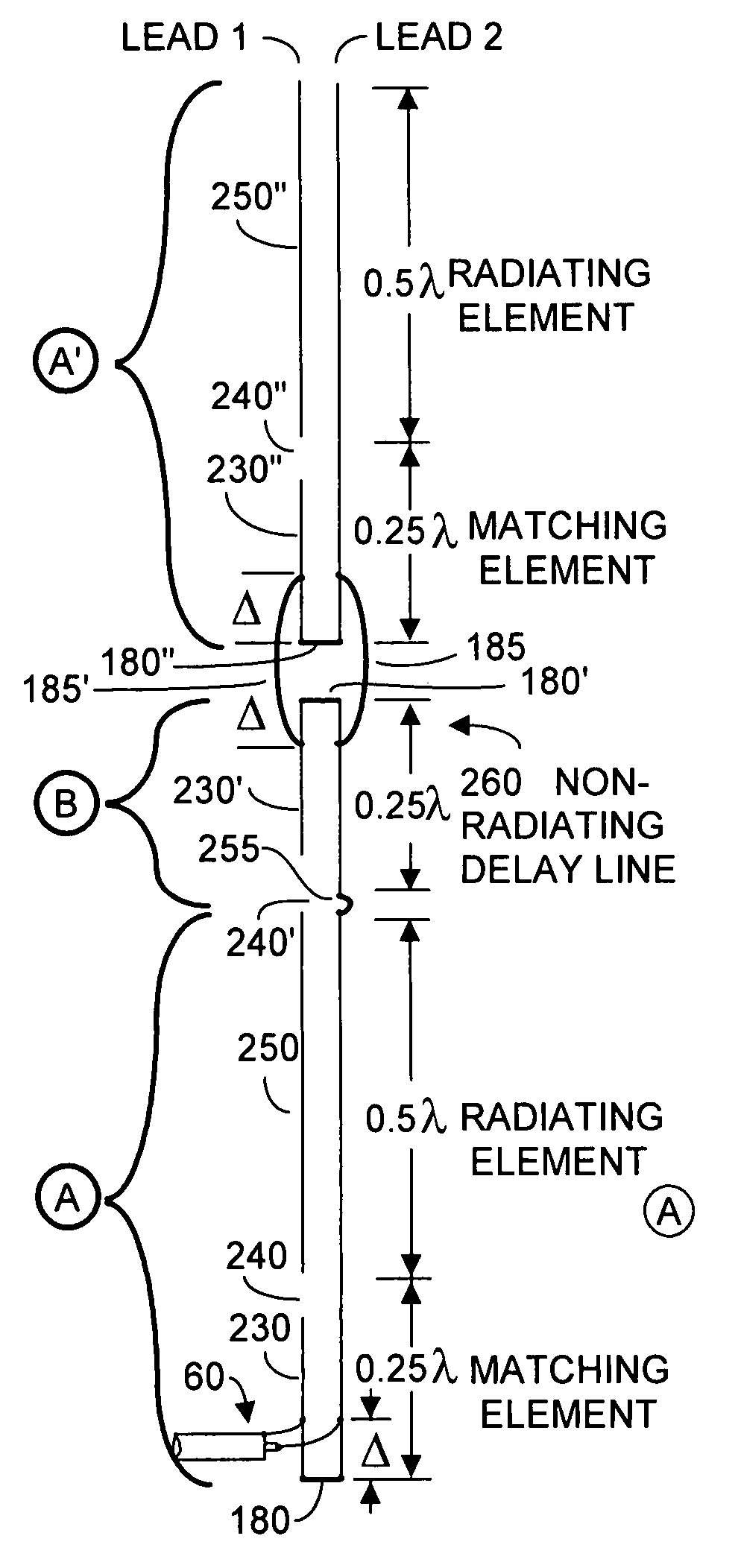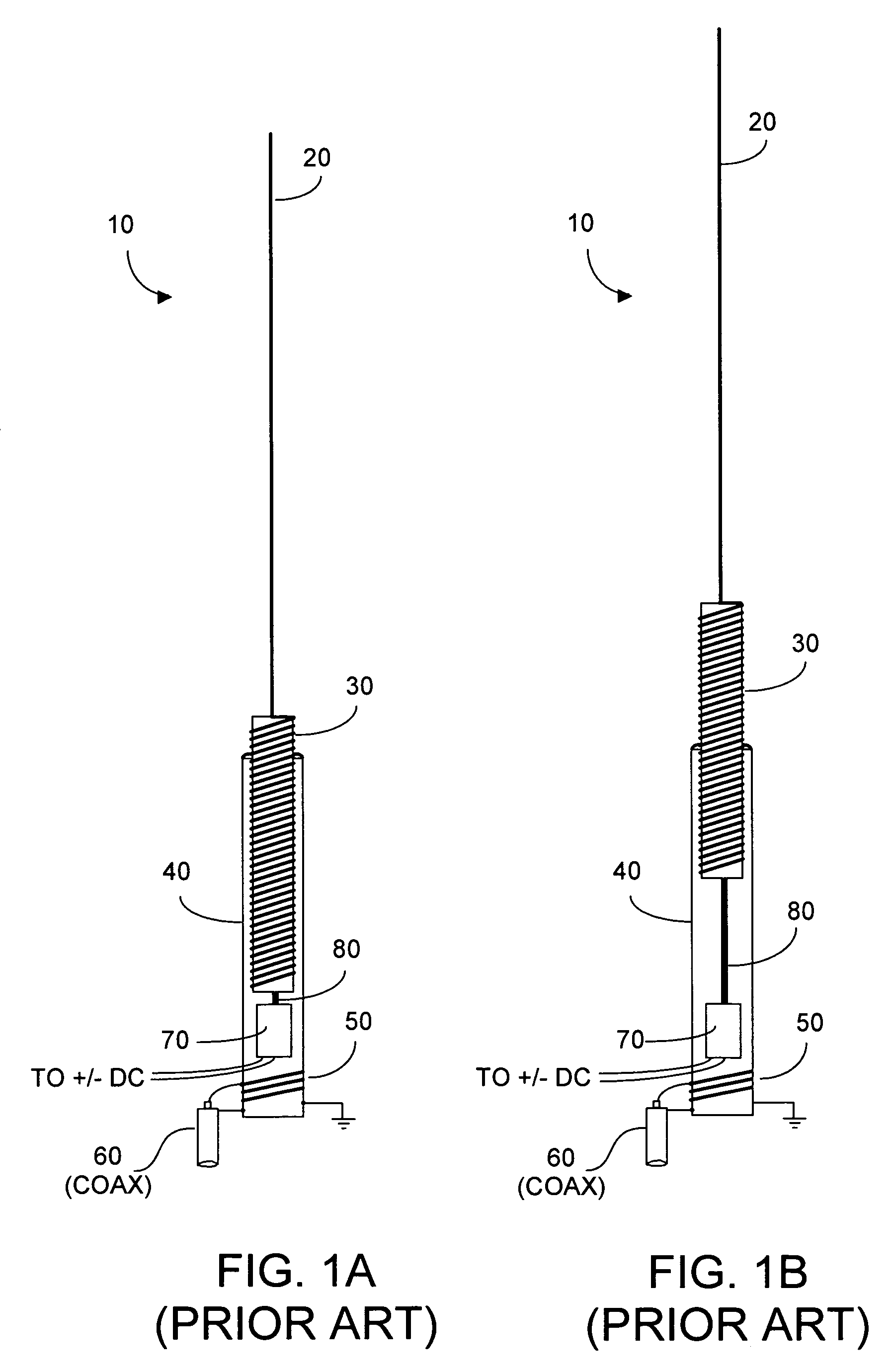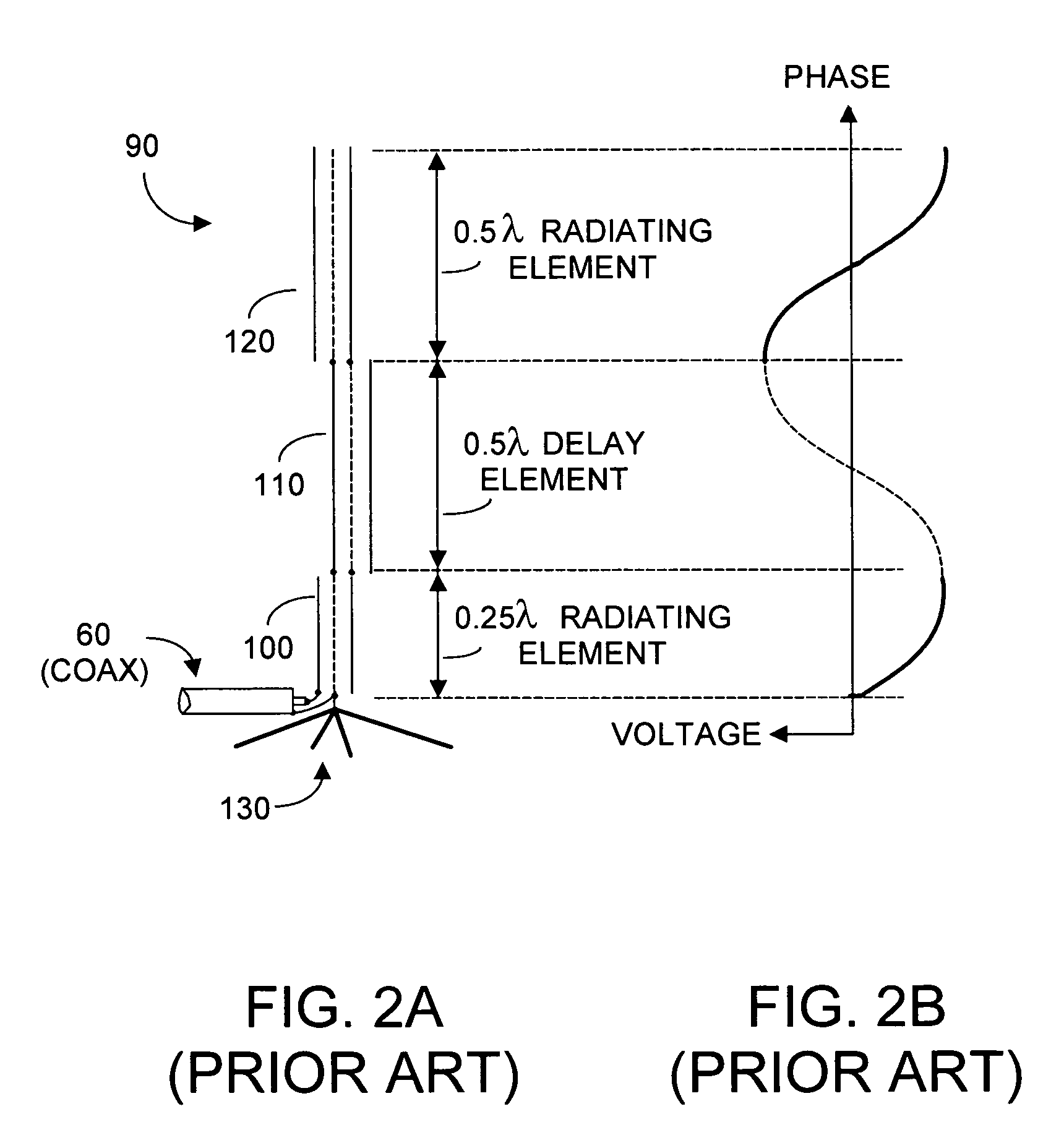Radial-free collinear omni-directional antenna with gain and virtual ground
a collinear omni-directional antenna, gain technology, applied in the direction of antennas, elongated active element feeds, electrically short antennas, etc., can solve the problems of reducing the robustness of the antenna design, reducing the return effectively, and damage from being walked on, etc., to achieve low cost, low weight, and easy mass production
- Summary
- Abstract
- Description
- Claims
- Application Information
AI Technical Summary
Benefits of technology
Problems solved by technology
Method used
Image
Examples
Embodiment Construction
[0037]FIG. 6A depicts an exemplary antenna 270, according to embodiments of the present invention. Antenna 270 comprises a first J-pole section denoted {circle around (A)}, a first quarter-wavelength non-radiating delay line section denoted {circle around (B)}, and a second J-pole section denoted {circle around (C)}. First J-pole section {circle around (A)} is similar to what has been described with respect to FIG. 5, and includes spaced-apart parallel first and second leads that form a quarter-wave matching element 230 whose first, lower, end has the two leads connected together by a short 180 to form an RF low impedance end, preferably 0Ω. The lead 2 side of element 230 extends about a quarter-wavelength at the nominal frequency of interest and has a high impedance second end. Lead 1 has a notch or gap 240 cut into the wire for a length of perhaps 0.25″. In FIG. 6A, below the level of notch 240 is the quarter-wavelength matching element, and above the notch is a half-wavelength ra...
PUM
 Login to View More
Login to View More Abstract
Description
Claims
Application Information
 Login to View More
Login to View More - R&D
- Intellectual Property
- Life Sciences
- Materials
- Tech Scout
- Unparalleled Data Quality
- Higher Quality Content
- 60% Fewer Hallucinations
Browse by: Latest US Patents, China's latest patents, Technical Efficacy Thesaurus, Application Domain, Technology Topic, Popular Technical Reports.
© 2025 PatSnap. All rights reserved.Legal|Privacy policy|Modern Slavery Act Transparency Statement|Sitemap|About US| Contact US: help@patsnap.com



